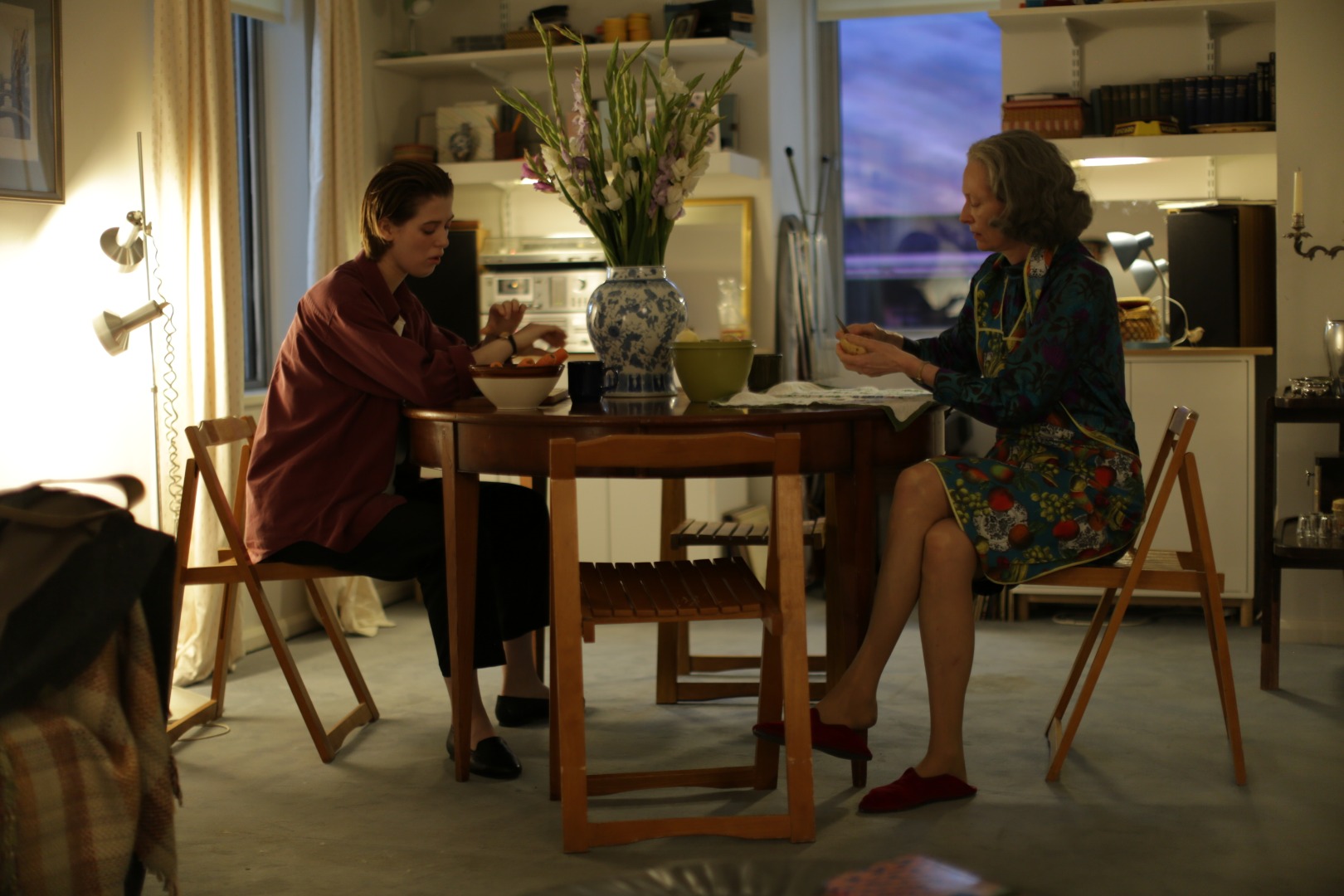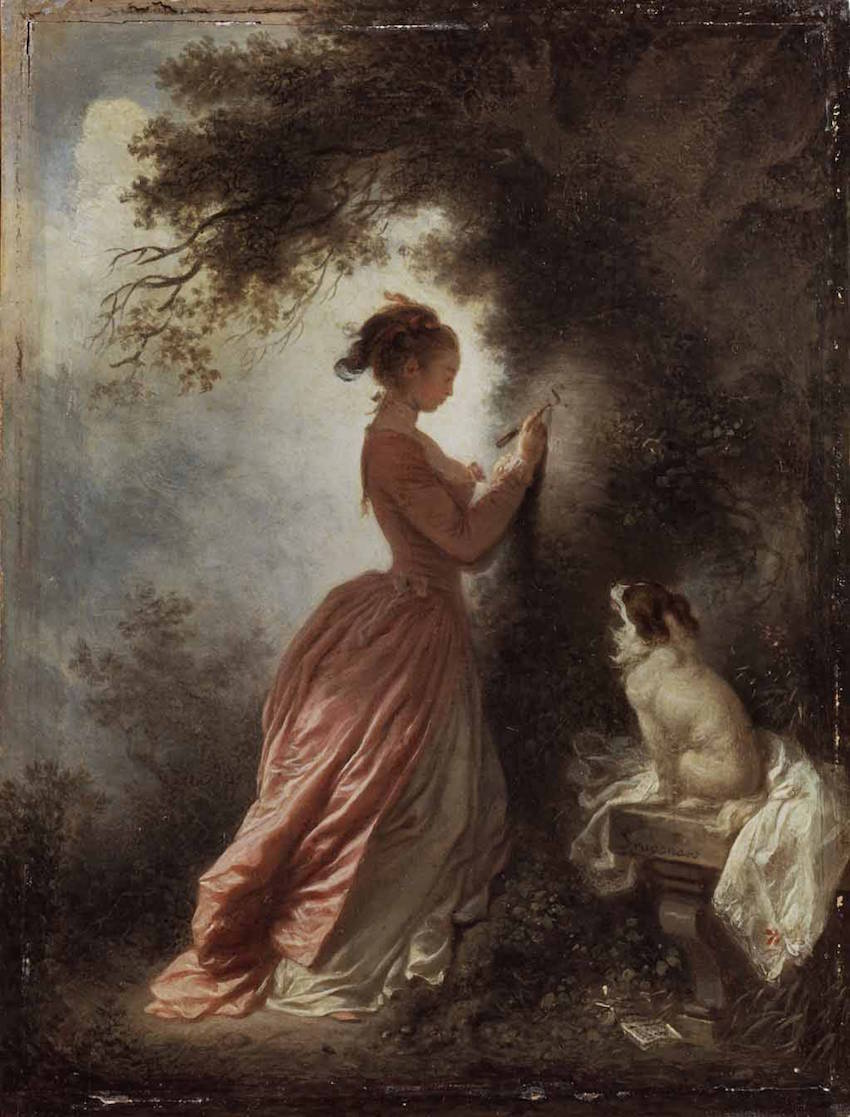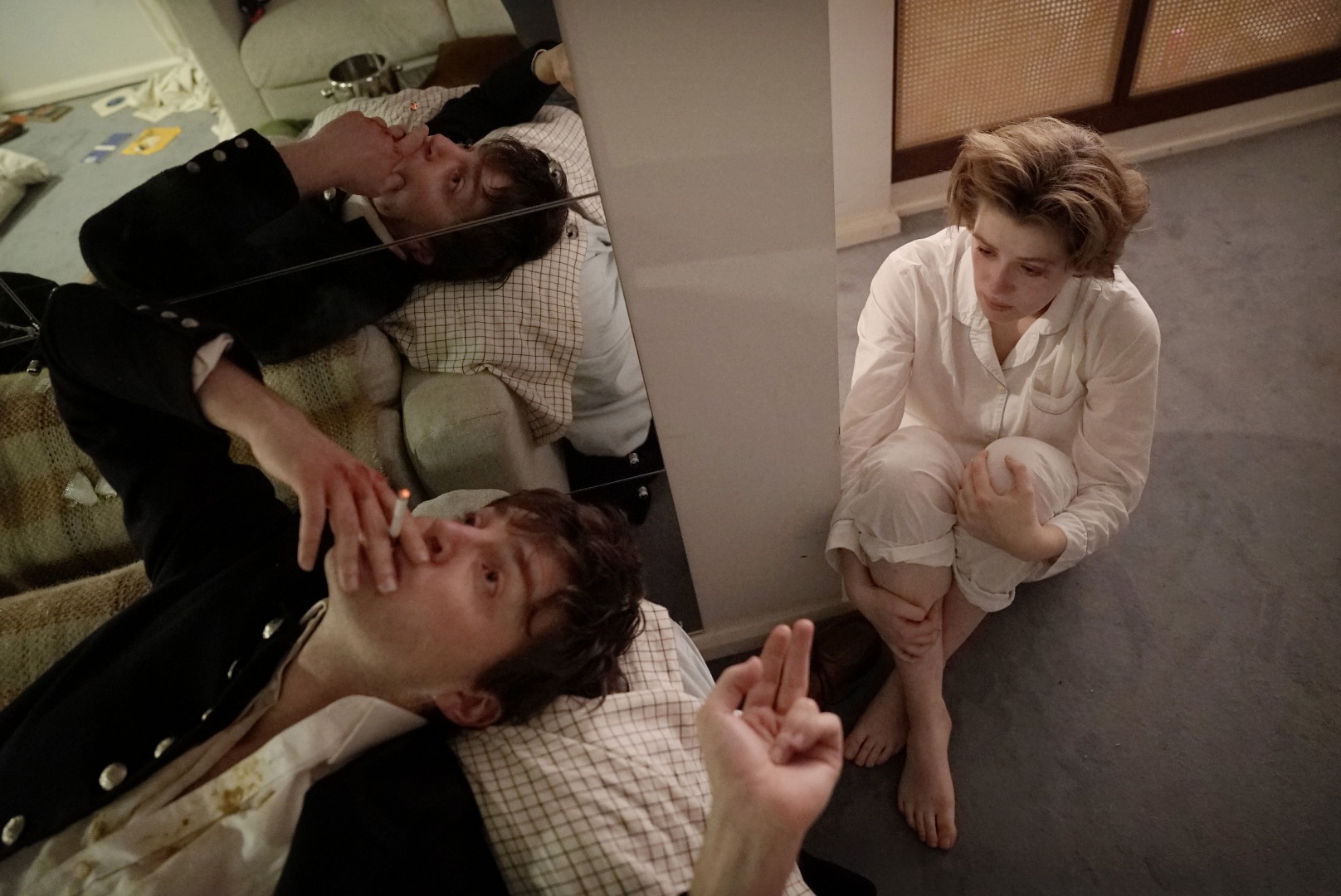Drawing on experiences from her life and early career Joanna Hogg delivers a refined, elegant and cathartic coming-of-age film, which feels as personal as political. An amalgamation of powerful memories of incidents, behaviours, emotions and old traumas retrieved just before they start to fade away, the film is an elegiac testament to the protagonist’s self-identification in relation to the socio-political context she grew up in and her decision to assert her re-claimed personality.
Hogg’s closeness to the subject and the abundance of literary and artistic references allow for a cinematic tale with a soul to emerge. A true cinematic gem for the big screen, which should not be missed. Nevertheless, the emulation of emotional registers serving as the main structure of the film, however beautifully shot and compelling at first, eventually runs out of steam leaving the onus of the narrative engagement to be conducted on a second level, which is represented by symbolic leitmotifs and literary references.
Set in 1980s Britain, the film follows the story of Julie, a young, kind and introvert film student whose “position of privilege” is much of a talking point among her friends, while they all hang out together in the flat she owns in Knightsbridge. It is a rather turbulent time in British politics with the ongoing “troubles”, among other socio-political problems, shaping the background of the story. Armed with the explosive combination of naivete and trust, which is inherent in young people, Julie is trying to define her personality through her interactions with other people and flex her muscles in the art of filmmaking. She meets Anthony, an older and enigmatic bon-vivant who claims to work for the Foreign Office. Soon enough he lures her with his air of confidence and self-assurance, his perfect diction and use of the most pompous words in the Oxford dictionary, his deep knowledge of art and the world, his tendency to “educate her”.
The impressionable Julie falls for Anthony and the relationship blossoms among the thorns of his condescending attitude which flirts with objectification and exploitation. Julie however is a young girl blinded with love and these thorns fail to signal to her fingers that this flower she affectionately caresses as love, might also be the source of acute pain. She introduces him to her father and mother Rosalind, played by Tilda Swinton, Honor Swinton Byrne’s mother in real life. He moves in with her and she starts deferring to him on everything from the direction of her graduation film to her direction in life. All this time however, Anthony hides a big secret which emerges unexpectedly in the most innocuous way with catastrophic repercussions for both of them. Julie finds the strength to use this experience to move on and grow.
Hogg employs primarily wide shots and minimal camera moves, which combined with the elegant, at times dream-like cinematography by David Raedeker give the film an alluring look, which echoes the style of Eric Rohmer and his expression of Nouvelle Vague. At the same time it serves well her purpose to replicate the look of a post-card; a memento emanating subtlety and an intellectualised remembrance of past experiences.

Loosely based on the filmmaker’s personal diaries and writings, archive material and artefacts the film exudes an air of authenticity based on an improvised script brought to life by the compelling central performances by Tilda Swinton and Tom Burke, as well as an interesting debut by Honor Swinton-Byrne. Tilda Swinton, who had also starred in Hogg’s very first feature film delivers a formidable performance as the stand-offish, privileged mother of Julie who shows no natural connection to her surroundings or any unrehearsed behaviours, until the very end. Tom Burke’s performance as the smart and conniving Anthony, is equally remarkable. He embodies the character with the necessary depth, highlighting the complex nature of all of his virtues, vices and afflictions. Swinton-Byrne portrays Julie’s journey from a fragile and naive girl looking to other people to define herself, to a strong and self-aware independent woman, with great conviction.
In line with the film’s premise of presenting a memento which is crafted out of fragments of memories and revisited emotional imprints, some characters suddenly appear in order to signpost a change in the plot or disappear accordingly. Intriguing though it is, this approach prevents the secondary characters from being fully developed and presents some potential issues with the ways they are represented, particularly in a modern day context. Richard Ayoade’s character as the exuberant and eccentric filmmaker feels somehow stereotyped. Similarly, the character of Julie’s classmate and friend Phil, who is black, and Garance, the French film student played by Ariane Labed, offer a representation of diversity which could be perceived as rather tokenistic or sketchy, if one used modern-day lenses. It is not clear whether it is the filmmaker’s intention to project on her characters the conscious and unconscious bias which characterised that period and led to more inclusive and egalitarian attitudes and movements ever since. One can only assume that this is possibly the case.
Hogg’s intention seems neither to indulge in the Discreet Charm Of The Bourgeoisie, as it were, the decadence of that time projected on tailored pinstripe suits whose provenance is traced back to Harrod’s, nor to glorify the leverage of a particular socio-historical construct over others or to repeat verbose and tired clichés about the troubling effect of some very upper class problems. There is a sense that she wants to look back at that period with scepticism in order to address, among other issues, the attitudes deriving from privilege on a personal and structural level, which lead to Julie’s challenges, suffering and finally empowerment. To a certain extent she certainly succeeds in that, mapping a cathartic personal experience which resonates with audiences. In so doing, she allows for a particular expression of the personal as political.

The Souvenir by Jean-Honoré Fragonard (c. 1775-1780)
Literary References And Leitmotifs
The direct and intertextual references to characters, names and symbols featured in literary works and also the works of art which appear during certain points in the film, serve as a second narrative level. Intriguing enough to encourage viewers to discern the nature of the connotations in relation to the film, this level compensates for a rather esoteric and self-contained first narrative level.
A curious mind with an appetite to explore all the things that are purposefully kept out of her socio-normative identity; an artist in the making who longs to discover the “truthfulness” and “reality” of her characters as a proxy for experiencing authentic emotions and their expressions beyond socio-cultural imaginaries; a young woman who wants to exercise her right to love and be loved passionately. Julie is Rousseau’s The New Heloise (1761); the archetype of an ingénue with a tragic fate, who has no other option but to come to terms with the liberating force of embracing her vulnerability and accepting all facets of her personality in order to survive, evolve and move on. She transcends the confines of time, and place allowing for a universal story to emerge: That of the antiheroine in her own story. Squashed in a protective shell so as not to derail from a pre-approved life, Julie carries herself with dignity never revealing her true thoughts or feelings. The latter are mirrored in the other character’s behaviour, attitudes, decisions and even outbursts. In one of the most critical scenes of the film, an emotionally charged Tilda Swinton breaks down next to a passive, almost stiff Honor Swinton Byrne.
This mirroring of Julie’s thoughts and emotional state on other people and most importantly on leitmotifs, is obvious in the appearance of Jean-Honoré Fragonard’s painting of The Souvenir. The painting appears in the film three times to coincide with the different stages Julie and Anthony’s relationship goes through: First, we get a glimpse of the painting after Anthony and Julie meet; secondly when they become a couple and they visit the Wallace Collection to observe the painting from up-close; thirdly when problems emerge between them and Julie receives a postcard from Anthony which depicts the painting. The disagreement between Anthony and Julie over the emotions which the lady in the painting experiences, reflects the dichotomy between two conflicting views which are inherent in the societies in which both the painting and the film are set. While Anthony thinks that the lady in the painting is deeply in love, Julie thinks that she is very sad.
A stimulating conversation with Dr. Yuriko Jackall, curator of French paintings at the Wallace Collection informed us that unlike most paintings of that era the position of the female body in The Souvenir, is somewhat rare. Breaking with the tradition of the time, Fragonard has his subject in The Souvenir positioning her body and face in a very unusual, yet intriguing way which allows different readings and interpretations. We can only see the profile of the lady who is depicted, while her active stance of carving a letter or number on the tree is essentially celebrating her physical strength, her dynamic personality. The latter symbolises her agency to break with socio-cultural norms of the time, which saw female representations in art either as helpless damsels in distress or as noble, unconsciously sensual beings stripped away from their agency in order to fully surrender to a voyeuristic gaze that objectified them.
It could be argued that the painting captures the zeitgeist of a change of culture in pre-revolutionary France particularly in relation to citizens’ and women’s rights. After all, not too long after the paint on The Souvenir had dried, circa 1775-1780, women would march from the marketplaces of Paris to Versailles on 5 October 1789, while in 1791 the feminist and abolitionist writer Olympe de Gouges would pen the seminal Declaration Of The Rights Of Woman And The Female Citizen. Nevertheless, the extent to which this change of culture and solidarity with the feminist and abolitionist movements was shared among all revolutionaries, let alone members of the ruling class, is highly debatable. While the march of women would be considered as a significant episodes during the French Revolution leading to political reform, Olympe de Gouges was convicted of treason and charged with execution. Fragonard himself was probably aware of that kind of dichotomies and contradictions fuelling the discourse and agenda of the time and he decidedly put the painting right in the middle of this.
Despite the fact that we can safely assume that he wanted to make a poignant comment on the decadence of the aristocracy, Fragonard was only able to create his art with the support of his predominantly white male, rich benefactors. So he made sure that his work would be honest and authentic enough to represent his views, but also cryptic enough in order to not oppose any gratification of the male gaze. Perhaps this is the reason why patrons who experience the painting project elements of their psyche on it, depending on their personal references. And perhaps this is why Anthony sees the painting as a proxy of what he would like his girlfriend to conform to and Julie as what she should avoid.
The thematic recurrence of symbols, names, episodes and views which are portrayed in other works of art, including Joanna Hogg’s previous films and writings help the film to create a refined story, which can be experienced through different lenses and different layers. Additionally, the eclectic narration which features certain instances, events and behaviours which seem as if they are retrieved from memory, bearing simultaneously an affectionate nostalgia and a trauma which has yet to be overcome, offers an alluring testament to the extraordinary journey to empowerment a young woman successfully completes. However, the film runs out of steam half way through and despite the strength which the symbolism and references to other works of art and literature provide the second narrative level with, it proves a little too ambitious for what it sets out to do. Still, the beautifully crafted, honest and intimate Souvenir is a must-see film, as it offers a tender and exquisite cinematic experience which provides a lot of room for thought, reflection and debate.
By Eirini Nikopoulou
Info:
The Souvenir. Writer and Filmmaker: Joanna Hogg. Cast: Tilda Swinton, Honor Swinton Byrne, Tom Burke, Tosin Cole, Richard Ayoade, Ariane Labed. Cinematography: David Raedeker. Edited by: Helle Le Fevre Produced by: Martin Scorcese, Dave Bishop, Crispin Buxton.
The Souvenir is released to UK cinemas on 30 August 2019. More information about screening times: https://www.curzonartificialeye.com/the-souvenir/
The Wallace collection has launched a research project dedicated to the restoration of Jean-Honoré Fragonard’s paintings and the discovery of the legacy of the prolific artist’s work in culture and society at large. More information about how one can become involved here: https://www.wallacecollection.org/support-us/fragonard-research-wallace-collection/

